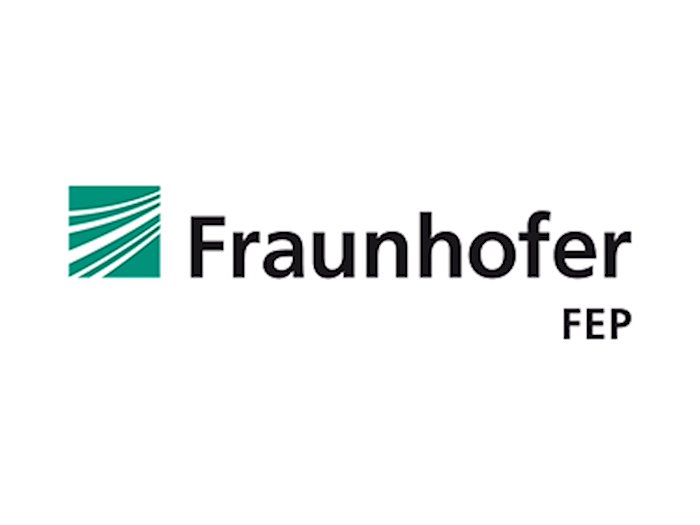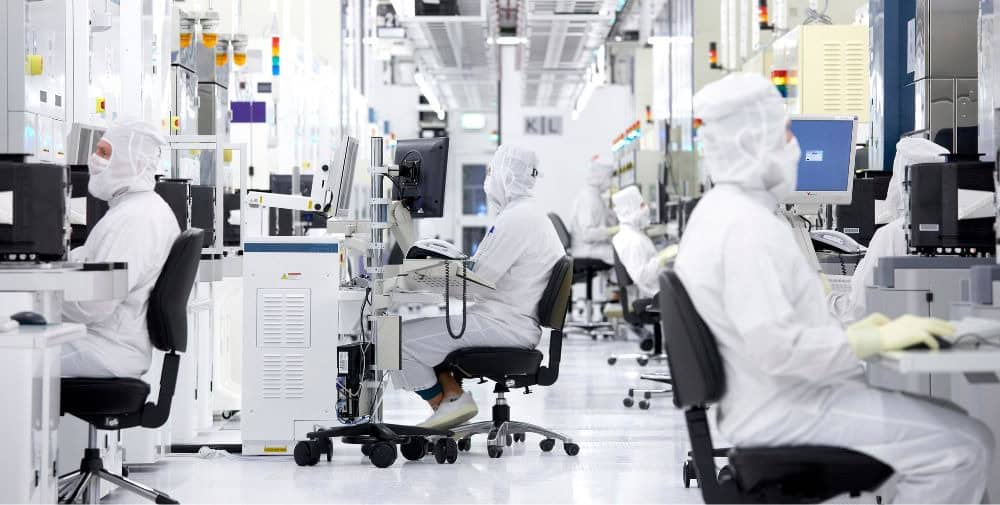
With the market launch of foldable displays, flexible glasses entered mass production for the first time. Otherwise, ultra-thin glass with “thicknesses” smaller than 0.1 mm is used in optics or microelectronics, but also in the consumer and automotive industries, for example, for touch surfaces. Here, the glass can be advantageous due to its excellent surface properties such as low roughness, high transparency and scratch resistance in combination with its flexibility.
In order to firmly establish ultra-thin glass as an alternative to polymer films for applications beyond foldable displays, adapted production processes must be developed. The main focus is on avoiding cost-intensive production downtime due to mechanical failure of the glasses. Until now, the use of this innovative substrate material has been limited by the high demands placed on the processes. In addition, the knowledge about handling and functionalization is not generally accessible.
Continuous process line for processing ultrathin glass
For more than ten years, Fraunhofer FEP has been working on the processing of ultrathin glass, in particular the handling and development of coatings.
In addition to the coating, the cleaning and handling as well as the detection of defects in the uncoated and coated glass are of great importance for the subsequent usability of the flexible glass. A publicly accessible technology platform with which these process steps can be implemented consistently did not yet exist.
This is where the Glass4Flex joint project comes in. In the joint project, new process technologies were developed as pathfinders for flexible glass applications for next-generation optical and/or electrical applications. Developers of such systems can now access the platform at Fraunhofer FEP.
Project manager Kerstin Täschner from Fraunhofer FEP explains the status achieved shortly before the end of the project (fall 2023): “Together with our partners, we have now established a process chain at Fraunhofer FEP that is unique in this form under cleanroom conditions. We have a handling line for flexible glass down to a minimum thickness of 30 µm on an area of 600 × 1200 mm². The process chain is completed by our vertical inline coating line ILA 900, which allows us to use and provide our many years of experience in coating thin glass and the know-how gained from cooperation with all major glass manufacturers as well as from projects such as CUSTOM throughout on a pilot scale.”
The process line includes a SCHMID Group ultrasonic wet cleaning line, in which glass sheets can be cleaned inline. To monitor the cleaning and coating quality of the glass, the researchers also have a white light interferometer from Gesellschaft für Bild- und Signalverarbeitung (GBS) mbH.
A new transfer system from Adenso GmbH was also installed to further handle the thin glass substrates from project partner SCHOTT AG. Under clean room conditions, the substrate can thus be transported contactlessly on an air cushion (air cushion floating) onto a mobile trolley. The electrostatic holder (so-called E-Chuck) from ProTec® Carrier Systems GmbH is already installed on this cart. The E-Chuck fixes the thin glass securely and over the entire surface by means of electrostatic clamping forces during the transport process and in the subsequent vertical coating and plasma treatment process. This guarantees homogeneous thermal conditions with minimized mechanical stress and without any shading.
After coating, reliability tests can be carried out with the ultra-thin glass sheets using various test devices. The company Bayflex Solutions provided bending test equipment (YUASA U-Shape Folding and Clamshell Folding) for this purpose as part of the CUSTOM project.
With the help of the equipment provided, the project gained deeper insights into the edge strength and fatigue behavior of thin glass. The Fraunhofer Institute for Microstructure of Materials and Systems IMWS, together with the Fraunhofer FEP, carried out extensive tests for this purpose. The influence of selected coating and separation processes on these properties was considered. The results can now be used to better estimate parameter fields for the reliable handling of flexible glass, e.g. minimum winding radii before and after coating. This means that changing strengths can be taken into account during processing. This increases the economic efficiency of production because production losses are avoided.
The future of thin glass processing
With the unique process line of the Glass4Flex project and the results from the CUSTOM project, scientists at Fraunhofer FEP are able to safely handle and reliably process ultrathin glass, taking into account layer stresses and glass strength. As of now, the researchers at the institute offer the new process capabilities for customer-specific projects ranging from coating and layer stack development to process adaptation for special customer requirements. In addition, the handling line is available as a technology platform, e.g. for feasibility studies and the development of innovative applications. Also the integration of e.g. lamination processes and process transfer up to pilot production is now possible in individual projects.
For further discussions and explanations on the process chain and the findings from the CUSTOM and Glass4Flex projects, the researchers will be available at the conference V2023, from 19. – September 20, 2023, at the Dresden Congress Center.
About the projects
CUSTOM – Investigation of the material behavior of ultrathin flexible glass in layered composites
Funder: German Federal Ministry of Economics and Climate Protection
Funding code: 21708 BR
Term: 01.03.2021 – 30.08.2023
Project partners
Fraunhofer IMWS
Companies from the project monitoring committee with outstanding contribution to the project:
– SCHOTT AG
– 3D-Micromac AG
– MDI Advanced Processing GmbH
– Bayflex Solutions
– GfE GESELLSCHAFT FÜR ELEKTROMETALLURGIE MBH
Glass4Flex – New Process Technologies as Pioneers for Flexible Glass Applications in Optical Systems
Funder: Federal Ministry of Education and Research
Funding code: 13N14615
Term: 2019 – 2023
www.photonikforschung.de/projekte/optikkomponenten/projekt/glass4flex.html
Project partners
– SCHOTT AG, www.schott.com
– SCHMID Group, www.schmid-group.com
– Gesellschaft für Bild- und Signalverarbeitung (GBS) mbH, www.gbs-ilmenau.de
– Adenso GmbH, www.adenso.solutions
– ProTec® Carrier Systems GmbH, www.protec-carrier.com
– – – –
Further links
👉 www.fep.fraunhofer.de
Photo: Fraunhofer FEP, Finn Hoyer
.




